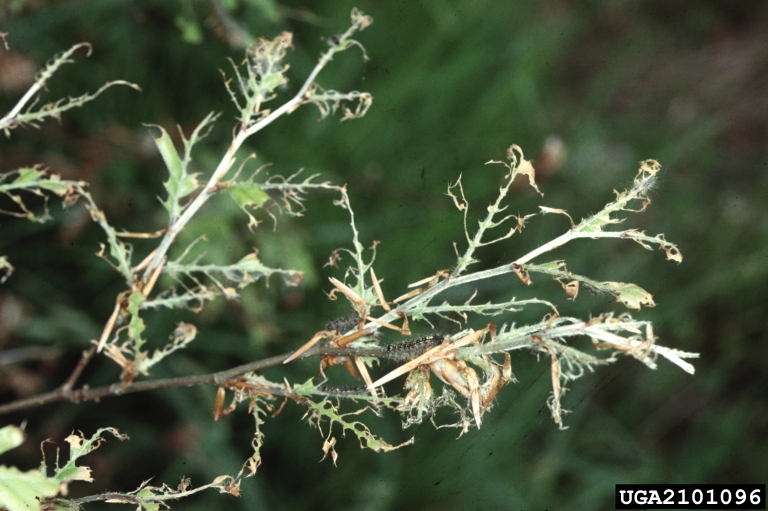Gypsy Moth Information

The Gypsy Moth is one of the most damaging pests of hardwood forests and urban landscapes, defoliating 350,000 acres of Massachusetts forest in 2016. The damage continued with930,000 acres in 2017 and 161,000 acres in 2018. Last year, there was very little caterpillar mortality and high moth reproductive success which predicts regionalized pockets of infestation in 2019.
The female gypsy moth lays an egg mass in July. Shortly after the female gypsy moth lays the egg mass, she dies, and the eggs wait out the winter until temperatures rise in the spring and a hatch begins. Upon hatching, in late April to early May, small black headed gypsy moth caterpillars, climb to the tops of the trees where they may begin to feed on foliage or they may dangle from silk strands and drift in the wind to colonize other trees. Gypsy moth caterpillars feed from late April to late June. Most of the feeding occurs at night to protect caterpillars from extreme heat and predation by birds during the day. When fully mature, caterpillars stop feeding, and form a cocoon. Adult moths emerge 7-10 days later. There is one generation per year.

How do I know if I have a problem?
- Do you have egg sacks currently on your trees?
- Was there an infestation in your area last year?
- Call us to discuss!!!
What can I do to protect my most valued trees?
- Control is most effective when Caterpillars are small, less than 1"
- Treatments use environmentally safe controls which target ONLY the gypsy moth
- Complete defoliation along with dry conditions can kill a shade tree in 1-2 seasons.
- Treatments are highly recommended for homeowners to prevent defoliation over the 50% level from occurring two or more years in a row
- CALL EARLY TO BOOK TREATMENT TO SAVE YOUR TREES!
CALL 888-347-9439





